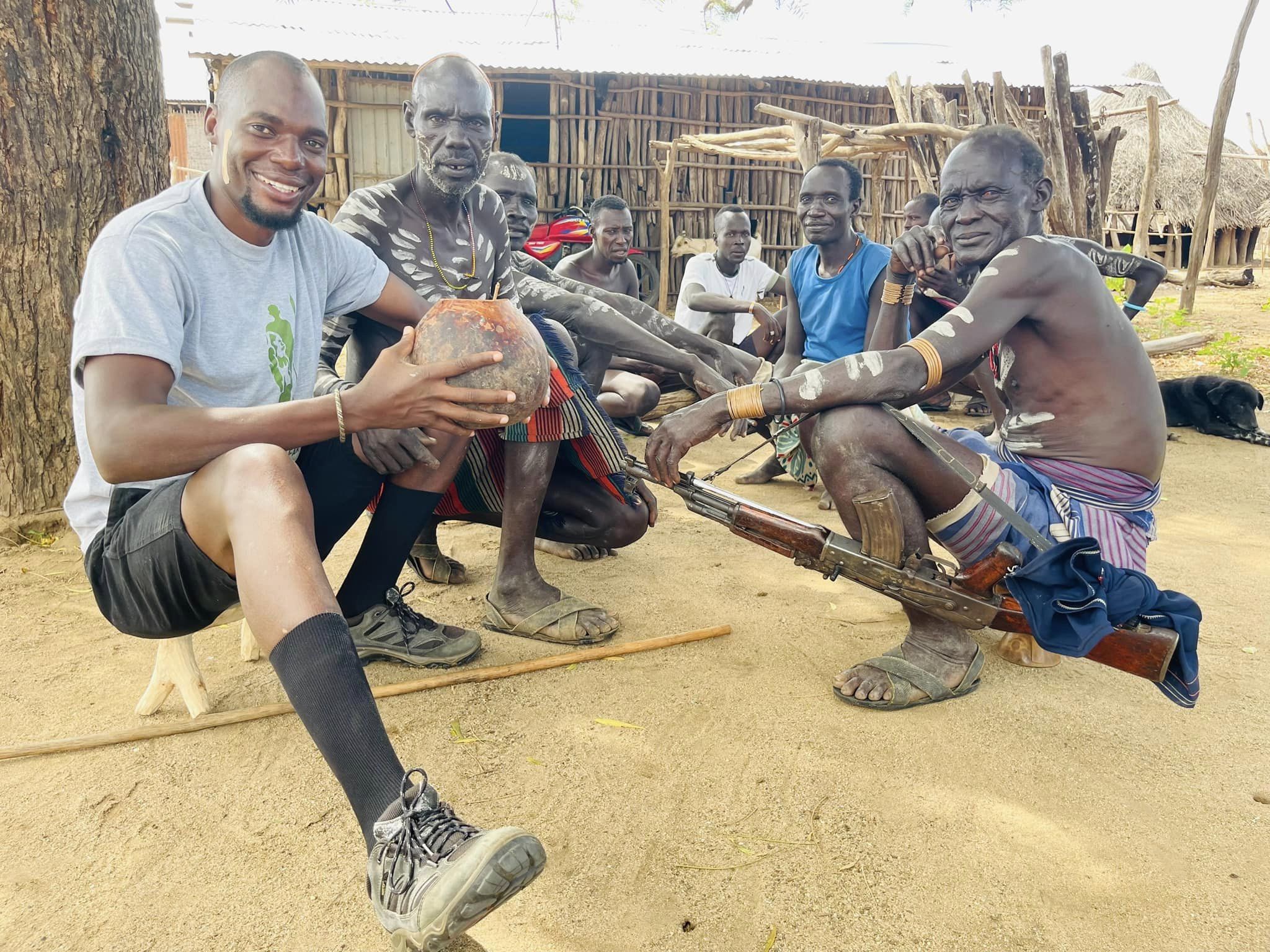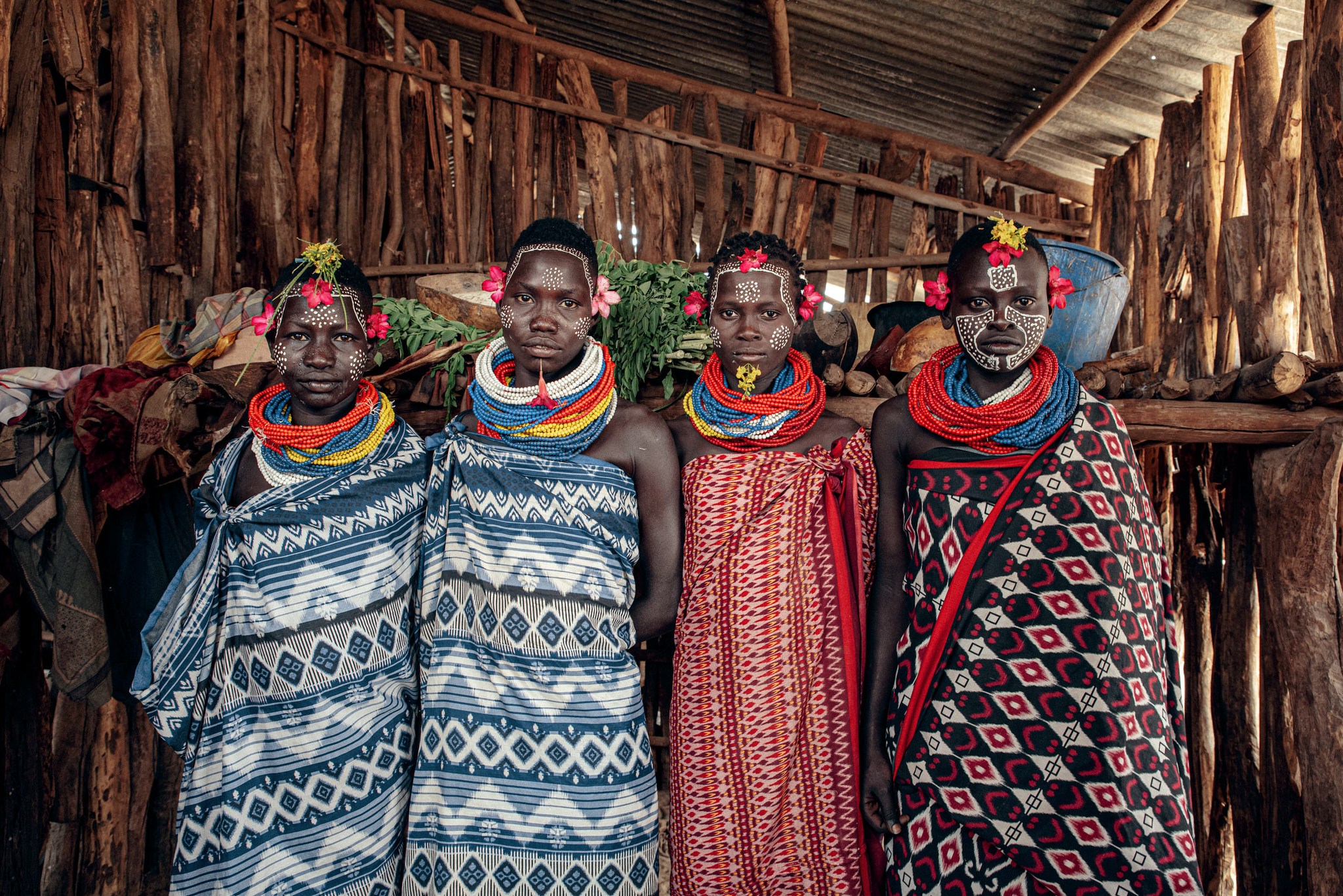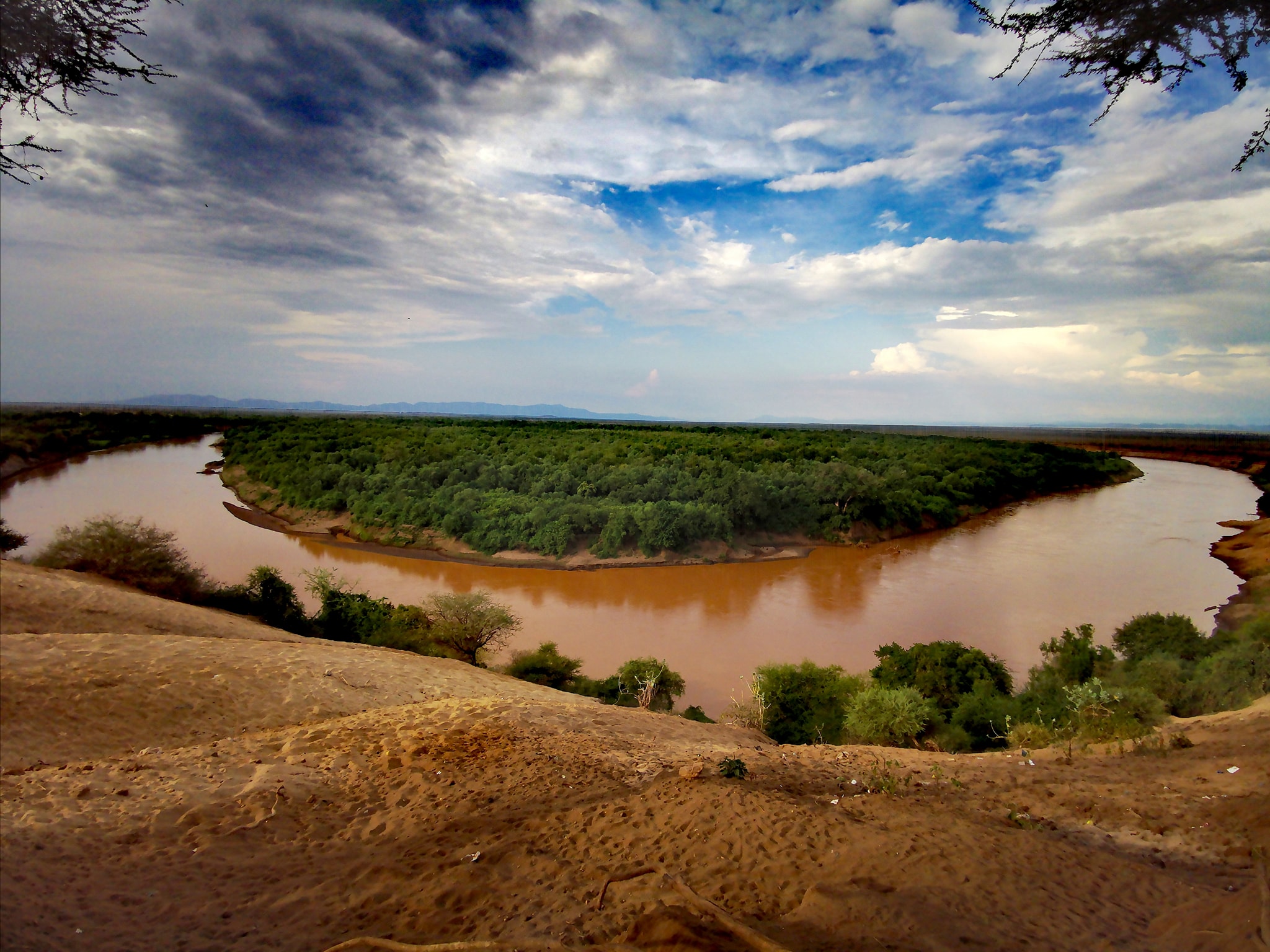Karo Tribe/People of Omo Valley, Ethiopia wildlife and cultural Tours
Embark on a visual exploration of Ethiopia’s smallest yet culturally rich tribe, the Karo. Known for their attention to appearance, the Karo People in the Omo Valley of Ethiopia have extraordinary body and face painting rituals where they use colored ochre, white chalk, yellow mineral rock, and other natural resources to paint themselves. Designs vary in content, from simple lines, dots, and shapes to animal motifs and handprints. Men use clay to create elaborate hairstyles and headdresses that signify status, beauty, and bravery. Male and female scarification also is a common practice both for its symbolism and aesthetic beauty. 
The Karo tribe is the smallest tribe in South Ethiopia that resides along the banks of the Omo River. Surrounded by more powerful and wealthier tribes, there’s a complex social hierarchy to thwart intermarriage and keep their lineages pure. Just like many original tribes, they are distinguished by practices peculiar to them. Their designs will change daily and each has different meanings. Specific rituals occur regularly within the Karo community, and sometimes even neighboring villagers will travel all night to witness these rites of passage and participate in the celebrations.
The Karo cultivate sorghum, corn, beans, and pumpkins. Sorghum is a staple used to cook porridge, mixed with milk or water, and is fermented to produce local beer for ceremonies. The Karo traditionally practiced “flood retreat agriculture,” using silt left by floodwaters that occur during the monsoon season to fertilize their crops. The Ethiopian government, needing to create more electricity, built a dam on the Omo River, which has caused disruption to the tribe's way of life and forced tribes upstream.
The Karo Tribe is one of many that make Africa a beautiful, diverse, and culturally mesmerizing continent. The Karo people differentiate themselves from many of the neighboring tribes by excelling specifically in body and face painting.

The Karo have an estimated population between just 1,000 and 3,000 and traditionally practice flood retreat cultivation. While historically they were well known for their skills in breeding, nowadays, only small-sized cattle are kept because of the increasing number of tsetse flies, who consume the blood of vertebrate animals.
Karo speaks an Omotic language. Karo is described as being closely related to its neighbors, Hamer and Banna.
When they were rich in cattle, the Karo were famous for their magnificent houses. After they lost their wealth, they adopted much more discreet conical huts. Each Karo family owns two houses: the Ono, the main living room of the family, and the flat-roofed Gappa, the center of household activities.
Beauty plays an important role in Karo’s cultural tradition, and for women, it is ingrained deep in their bodies. Women inflict lacerations and cuts on certain areas of their bodies to produce intricate patterns of scars. It should be noted that all this is done for beauty reasons, as a woman with these types of scars on her torso is considered by her people as mature and attractive. The scars are cut with a knife or razor and ash is rubbed into them to produce a permanent welt.
The men scarify themselves too, but theirs is to symbolize courageous acts. If you see a Karo man with scars across his chest, have it in mind that he’s letting you know that he has bravely killed enemies from rival tribes or a deadly animal. A man sporting scars on his chest is held in high esteem in his community as each scar represents a single kill.

The Karo have created a complex social hierarchy avoiding intermarriage to try and keep their lineages pure. To boost their sex appeal, both men and women of the tribe paint their faces and bodies.
For the Karo, male and female body scarification conveys either significant symbolism or aesthetic beauty. Ritual combats between the clans are of great importance because the men can exhibit their beauty and courage, and consequently attract a woman.
Karo Religious beliefs:
The Karo believe in 'Barriyo', the creator and source of good fortune. They always follow their religious leader, the Bitti, who is in charge of securing communal well-being in the social and natural environments.

Book and Arrange with Ultimate Wild Safaris for the Karo Tribe Cultural Safari tour in the Omo Valley of Ethiopia.
Email: This email address is being protected from spambots. You need JavaScript enabled to view it.
Mobile: +256 705 087 906 / 760 282 342

